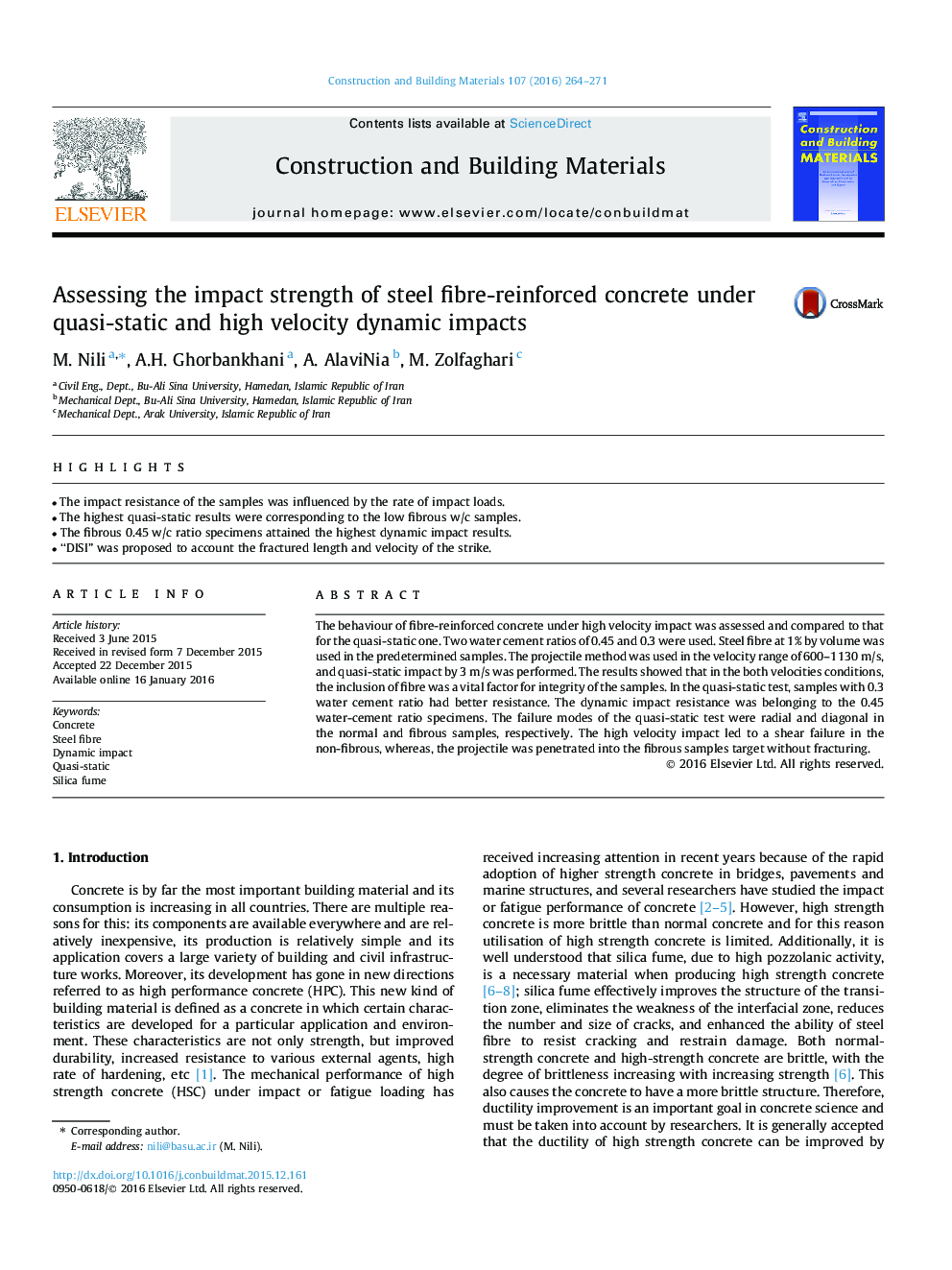| Article ID | Journal | Published Year | Pages | File Type |
|---|---|---|---|---|
| 256255 | Construction and Building Materials | 2016 | 8 Pages |
•The impact resistance of the samples was influenced by the rate of impact loads.•The highest quasi-static results were corresponding to the low fibrous w/c samples.•The fibrous 0.45 w/c ratio specimens attained the highest dynamic impact results.•“DISI” was proposed to account the fractured length and velocity of the strike.
The behaviour of fibre-reinforced concrete under high velocity impact was assessed and compared to that for the quasi-static one. Two water cement ratios of 0.45 and 0.3 were used. Steel fibre at 1% by volume was used in the predetermined samples. The projectile method was used in the velocity range of 600–1130 m/s, and quasi-static impact by 3 m/s was performed. The results showed that in the both velocities conditions, the inclusion of fibre was a vital factor for integrity of the samples. In the quasi-static test, samples with 0.3 water cement ratio had better resistance. The dynamic impact resistance was belonging to the 0.45 water-cement ratio specimens. The failure modes of the quasi-static test were radial and diagonal in the normal and fibrous samples, respectively. The high velocity impact led to a shear failure in the non-fibrous, whereas, the projectile was penetrated into the fibrous samples target without fracturing.
